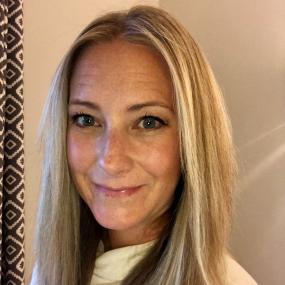Planning for an invisible enemy

Dr Sarah Marsh is deputy Chair of the Women in Intensive Care Medicine Sub-Committee and the Education sub-committees of the FICM. She is also course Programme Director for the FICM’s exam preparatory course.
Back at the start of the year, we all watched the news with curiosity about a place called Wuhan, and a new coronavirus that was ravaging the city. We continued to watch with further interest as it made its way towards Europe.
The situation became increasingly concerning as the virus hit Italy, with very raw reports from the intensive care community unfolding exponentially over social media. Our Italian colleagues were sending out dire warnings to get ready, and to do so quickly as they struggled with the catastrophe that was developing.
Pouring over social media, reading as much as I could about what was coming, I began to get increasingly anxious. We needed to increase capacity, we needed to train our teams, we needed equipment and we needed time in which to sort all of that out. Clearly difficult decisions needed to be made regarding elective activity and at the right time – not too soon and not too late. To the intensive care community, it felt like that sweet spot was probably too far away. I’m sure a lot of intensivists at this stage had problems sleeping like I did (mainly because I was reading endless twitter feeds) and then waking at about 5am with a tachycardia.
First and foremost, we needed to change the way in which we worked – how we dressed, how we approached a patient, and how we medically managed them. This required training and lots of it. Very quickly the intensivists and anaesthetists I worked with, like many others up and down the country, started training sessions for critical care and theatre staff on how to donn and doff. Simulation sessions on how to intubate a patient with Coronavirus were written and then implemented, with how to prone, how to extubate and how to transfer soon following. At this stage this was done predominately in our spare time as we still had commitments to elective activity.
The global intensive care community was unstoppable however, sharing protocols, guidance, experiences and thoughts about what to do. Social media has never been so fantastic! It really felt like a group effort across the world, significantly reducing the extra burden on medical staff and the duplication of work that was inevitably occurring. The frustrations however, grew in trying to put into practice all of this good stuff, without being able to predict or quite believing what was going to happen.
As the patients started to come in thick and fast elective activity was finally cancelled, which really felt like not a moment too soon; we could just get on with the job instead of worrying about the tsunami that we knew was coming. Instead of being busy worrying, we were busy doing. Looking after patients is what we do, the medicine bit is easy to some degree, planning for an invisible enemy is not.
The rest is history as they say. We donned, doffed, proned, tubed and CPAP-ed our way through the coming months, to the point where now getting all dressed up in PPE seems entirely normal these days. There doesn’t seem to be a problem that we can’t now surmount, as thinking laterally has become part of the norm too. Like many other critical care units, we quickly outgrew our original unit and needed to expand. A green critical care unit was created in our recovery area, and then a further red critical care unit on our medical admissions unit. Moving complex patients with a contagious infection around a working hospital certainly brought with it some challenges, but the whole trust-wide team pulled together to perform these extraordinary tasks that pre CoViD-19 would have seemed impossible.
On a personal note just as I started to relax into the pandemic, my son developed an acute abdomen requiring surgery. This led to a 7 day stay on the paediatric ward, with only 1 parent allowed to stay with no swapping! It was certainly an experience to be on the other side of CoViD-19. The faceless care workers, and the difficulty in understanding discussions because of PPE really brought home to me just how challenging it is to be a patient during these times. It seems like a luxury now to be able to see someone’s face and the touch of their gloveless hand on yours, and I miss how reassuring that can be for patients and staff.
Difficult times remain ahead as the balance of the amount of elective work to restart versus the ongoing pandemic is worked through. In some ways I shall miss the fast-moving pace that CoViD-19 brought with it, the flexibility of everyone, the incredible team spirit. I won’t however miss the state of hyperarousal that I found myself in; waking early, continually pouring over SoMe, feeling anxious and overwhelmed at times. I do know that whatever happens, the NHS will never quite be the same again.
